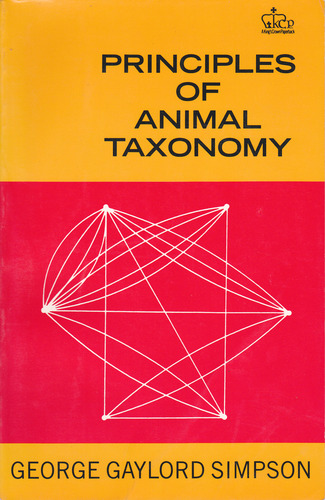Principles of animal taxonomy pdf
Par moore edward le lundi, septembre 12 2016, 07:41 - Lien permanent
Principles of animal taxonomy by George Gaylord Simpson


Download eBook
Principles of animal taxonomy George Gaylord Simpson ebook
Format: djvu
Publisher: Columbia University Press
ISBN: 023109650X, 9780231096508
Page: 131
An arrangement, order + a law.] That division of the natural sciences which treats of the classification of animals and plants; the laws or principles of classification. Comparison of exotic horn types The heroic age of biological taxonomy is long over, but anatomy as an explanatory principle is still able to take over with a special convincing force any wonderful being from the world of legends to our one. Andrew Pawley (Aukland, 1991), 137-47; Brent Berlin, Ethnobiological Classification: Principles of Categorization of Plants and Animals in Traditional Societies (Princeton, 1992); Douglas Medin and Scott Atran, eds. His works, Tempo and Mode in Evolution (1944) and Principles of Classification and a Classification of Mammals (1945), were particularly instrumental in this respect. Yeah, it is difficult but it is not boring at all. Okay, so I was talking about FPJ 140 or ZOO 140 (Animal Taxonomy). Webster's Revised Dictionary (1913 Edition) [1]. Most think that taxonomy is boring and difficult. Cuvier's The Animal Kingdom, Arranged According to its Organization, Serving as a Foundation for the Natural History of Animals, was an attempt to classify the animal kingdom on the basis of comparative anatomy, of which Cuvier's entire classification schema was Using these principles, Cuvier established a taxonomic approach based on comparative anatomy that established correlations between the inner systems that maintained life within an organism. Each recently discovered new animal or prodigious being became understandable and inserted in the common system for once as soon as its anatomy was described and, first of all, depicted.